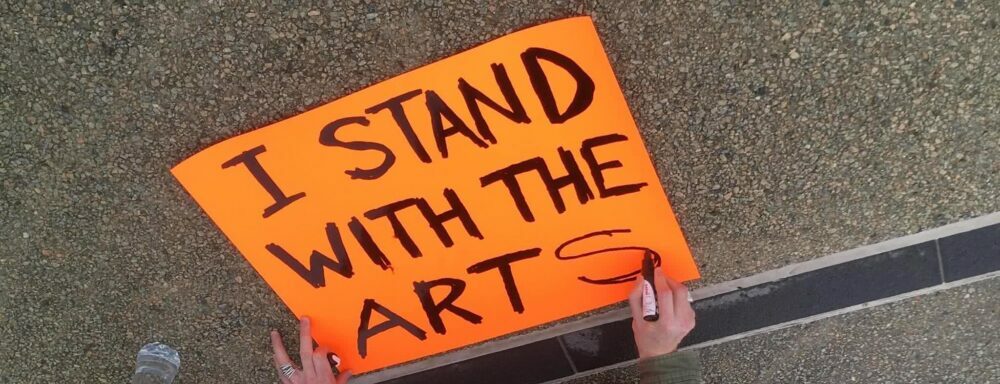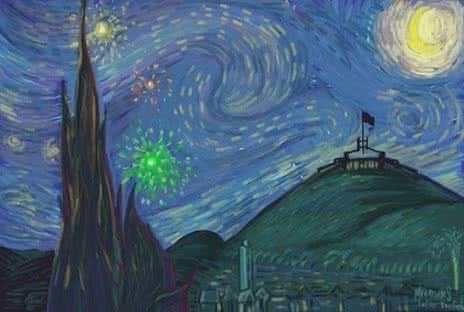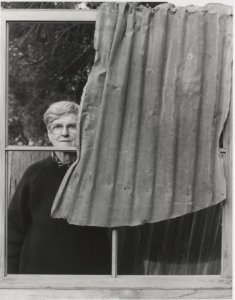Throughout much of the past twelve months, across the suburbs of the National Capital and beyond, there has been a conversation. It began in a lounge-room and was progressed in cafes and bars and restaurants and foyers, even spreading out to a pub in Goulburn. At the core of this conversation was a question: does the ACT region warrant a voice for the arts? The answer was yes, it sure does. And so the Childers Group – an independent arts forum – was born.
Like any sector that matters, the arts aren’t immune to passion and opinion. However, the Childers Group approach is to bring cool, calm, considered thinking to the arts and to always base its advocacy on fact. And the fact is the ACT region is rich in arts activity and rich in arts participation. In the global context, the population is well remunerated, highly educated, and actively engaged in arts and cultural activities. But how can the arts and cultural life of the ACT region progress to the point where creativity is at the very centre of daily life, and we can be proud of it?
The arts investigate, illuminate, challenge and connect; they tell the story of what it means to be Australian in all its layers and guises. Participation in the arts fosters a sense of community, promotes health and well-being, encourages cooperation, and helps to reduce the pressures of a competitive, materialistic society.
The arts aren’t afraid.
These are easy words to say, but the aspirations are difficult to advocate.
Another fact: in our country, as soon as our cultural, business and political leaders begin talking about the importance of the arts, they run the risk of being seen to be out of touch, of being elitist, of somehow forgetting that their real job is to know the cost of a loaf of bread. But how can the arts even be considered as ‘elitist’ when, according to the Australia Council, an artist earns on average $35,900 per annum, of which only $10,300 comes from their creative practice if they are male, and a mere $5,000 if they are female?
It’s also a fact that we live in society, not an economy. It would be a rare Australian – no matter where they live, city or country, coast or inland – who gets to the end of their day and hasn’t been touched by some kind of creative endeavour: extraordinary music, or artfully crafted words, or skilful design of home-ware, machine and technology.
Despite everything, creativity surrounds us; it’s part of who we are.
In April this year, the Childers Group hosted a public forum titled “Burning Issues and Radical Ideas”. To the Group’s surprise and delight, almost 150 people turned up, proving that our community is bursting to explore the importance of the arts and life’s cultural experiences.
Issues raised at the Forum represent opportunities.
There was a surprising emphasis on the potential of cross-sector, cross- disciplinary, cross-regional cooperation: between groups and individuals; between universities, colleges, and school communities; between professional and amateur; between the public and the private sectors; between government jurisdictions and government departments; between city and town and village.
The installation of the National Broadband Network presents a new digital environment for Australia, offering endless possibilities for cooperation and the exchange of ideas and information. Artists and all those engaged in creative practice can already see that the NBN will open up a new digital future, one that will invigorate Australia. The challenge is to use this opportunity to meet the expectations of our artists and facilitate innovative thinking more generally.
A frustration expressed at the Forum concerned the lack of a vision for our arts and creative future, including a clearly articulated and practicable strategic plan at all levels of government. Short-term, ad hoc decisions in funding and planning delay or impede the development of arts infrastructure.
Forum attendees asked how can we amend our urban planning systems so that the organic growth of arts precincts can be facilitated, especially the sort of precincts that pulse with life and invite extensive participation?
Attendees highlighted the impressive range of arts practices, exhibitions and performances scheduled in the ACT region, but asked how can the arts and cultural sector better connect with tourism promotion and publicity?
Canberra’s national cultural institutions, museums and galleries, universities, colleges and schools employ many visual artists, musicians, composers, and writers, and their presence and their work is integral to the vitality of our region’s cultural life. They offer a high level of professionalism as a benchmark for the community. The inter-connection between institution-based artists and cultural infrastructure – arts organisations, arts centres, and community groups – is central to the quality of arts experiences available. The wide-spread outpouring of concern about proposals to reduce specialist music tuition at the ANU School of Music exemplifies the importance of the link between the School’s professional musicians and the region’s music community, which relies on specialist expertise at a high artistic standing.
The ACT region is home to a wide range of professional artists, many of whom straddle the institution-community divide. These practitioners form the back-bone of our cultural life, contributing to the vitality and energy in our communities. Without an institutional employment base, they would be lost to us. Without these artists, we lose their ideas, expertise and inspirational practice premised on research, innovation, technical risk, and the acquisition of new knowledge. Without these artists, we are all less inspired to think in new and exciting ways.
In 2013 there are two significant birthdays in our region: the Centenary of Canberra and Goulburn’s 150th as a city. Now is the time to capitalise on the depth of creative talent and the quality of cultural life around us. Now is the time to tackle big issues, support radical thinking, to be brave. Now is the time to highlight the national and international achievements of our artists and arts organisations and the significance of our educational and cultural institutions. Now is the time to celebrate with confidence and generosity the inspired creative crucible that is the ACT region – there is no doubt that it can be a place that lifts us all above life’s utilitarian dimension. The Childers Group is serious about that word crucible, because we have at our core Canberra, the nation’s capital city.
In the year of significant milestones, let’s honour the quality of cultural life and the creative crucible that is the ACT region. The spirit of that idea makes us a very special place indeed.
This piece, which was first published in The Canberra Times on 28 May 2012, was written by Professor David Williams AM and Nigel Featherstone, who are foundation members of the Childers Group.


